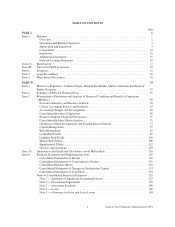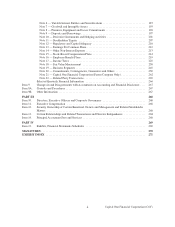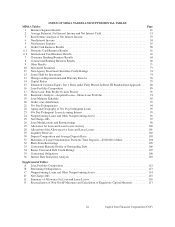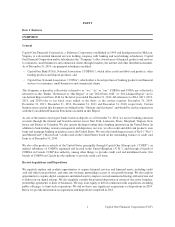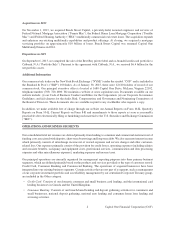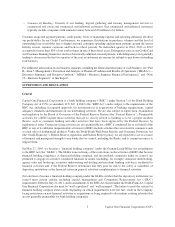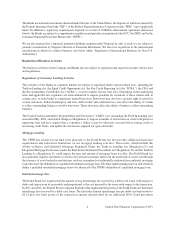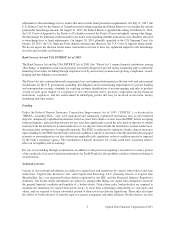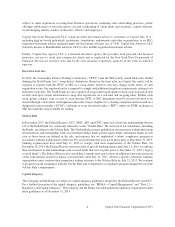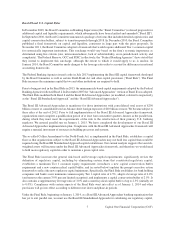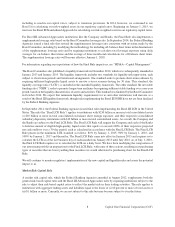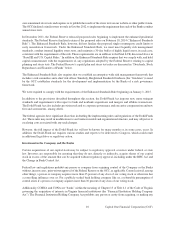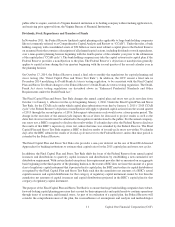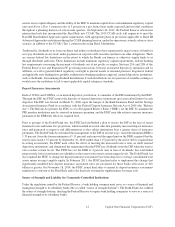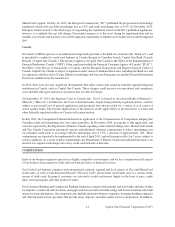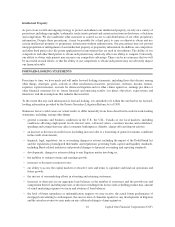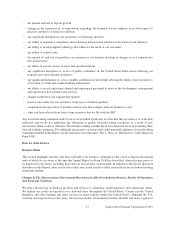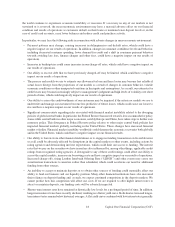Capital One 2014 Annual Report Download - page 30
Download and view the complete annual report
Please find page 30 of the 2014 Capital One annual report below. You can navigate through the pages in the report by either clicking on the pages listed below, or by using the keyword search tool below to find specific information within the annual report.including as used in our capital ratios, subject to transition provisions. In 2014, however, we continued to use
Basel I for calculating our risk-weighted assets in our regulatory capital ratios. Beginning on January 1, 2015, we
must use the Basel III Standardized Approach for calculating our risk-weighted assets in our regulatory capital ratios.
For Basel III Advanced Approaches institutions like the Company and Banks, the Final Rule also implements a
supplementary leverage ratio based on the Basel Committee leverage ratio. In September 2014, the Federal Banking
Agencies issued a final rule that revised the supplementary leverage ratio consistent with revisions made by the
Basel Committee, including by modifying the methodology for including off-balance sheet items in the denominator
of the supplementary leverage ratio and by requiring institutions to calculate total leverage exposure using daily
averages for on-balance sheet items and the average of three month-end calculations for off-balance sheet items.
The supplementary leverage ratio will become effective January 1, 2018.
For information regarding our expectations of how the Final Rule impacts us, see “MD&A—Capital Management.”
The Basel Committee also published a liquidity framework in December 2010, which was subsequently amended in
January 2013 and January 2014. The liquidity framework includes two standards for liquidity risk supervision, each
subject to observation periods and transitional arrangements. One standard seeks to promote short-term resilience by
requiring sufficient high-quality liquid assets to survive a stress scenario lasting for 30 days. This standard, the
liquidity coverage ratio (“LCR”), is included in the amended liquidity framework. The other standard, the net stable
funding ratio (“NSFR”), seeks to promote longer-term resilience by requiring sufficient stable funding over a one-year
period, based on the liquidity characteristics of assets and activities. This standard was finalized by the Basel Committee
in October 2014. We expect that minimum liquidity requirements for us and other institutions will increase as a
result of the Basel III liquidity framework, though rules implementing the Basel III NSFR have not yet been finalized
by the Federal Banking Agencies.
In September 2014, the Federal Banking Agencies issued final rules implementing the Basel III LCR in the United
States. The rule (the “Final LCR Rule”) applies to institutions with $250 billion or more in total consolidated assets
or $10 billion or more in total consolidated on-balance sheet foreign exposure, and their respective consolidated
subsidiary depository institutions with $10 billion or more in total consolidated assets. As a result, the Company and
the Banks are subject to the Final LCR Rule. The Final LCR Rule will require the Company and each of the Banks
to hold an amount of eligible high-quality, liquid assets that equals or exceeds 100% of their respective projected
net cash outflows over a 30-day period, each as calculated in accordance with the Final LCR Rule. The Final LCR
Rule phases in the minimum LCR standard as follows: 80% by January 1, 2015; 90% by January 1, 2016; and
100% by January 1, 2017 and thereafter. The Final LCR Rule came into effect in January 2015 and requires us to
calculate the LCR as of the last business day of each month from January 2015 until July 2016. As of July 1, 2016,
the Final LCR Rule requires us to calculate the LCR on a daily basis. We have been modifying the composition of
our investment portfolio in preparation for the Final LCR Rule, with some of these actions resulting in us purchasing
types of securities that are lower yielding than securities we would otherwise be purchasing if not for the Final LCR
Rule.
We will continue to monitor regulators’ implementation of the new capital and liquidity rules and assess the potential
impact to us.
Market Risk Capital Rule
A market risk capital rule, which the Federal Banking Agencies amended in August 2012, supplements both the
general risk-based capital rules and the Basel III Advanced Approaches rules by requiring institutions subject to the
rule to adjust their risk-based capital ratios to reflect the market risk in their trading activities. The rule applies to
institutions with aggregate trading assets and liabilities equal to the lesser of (i) 10 percent or more of total assets or
(ii) $1 billion or more. Currently, we are not subject to this rule but may become subject to it in the future.
8Capital One Financial Corporation (COF)


